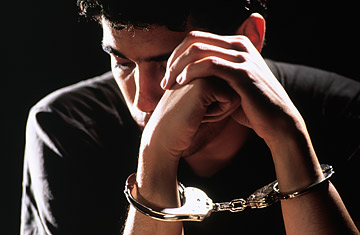
(2 of 2)
Occasionally the widespread problems at juvenile facilities erupt in scandals, as in the aforementioned Texas, or in Mississippi, where minor offenders were hog-tied in facilities that sometimes had only dirt floors, run by guards with barely a high school education. Federal officials occasionally intervene against egregious facilities where there have even been some deaths along with thousands of allegations of abuses. But experts say simply trying to weed out the bad actors is not a viable solution. At a congressional hearing in October 2007, Jan Moss, executive director of the National Association of Therapeutic Schools and Programs, said the industry wanted stronger regulation. "Among our goals is the complete elimination of the abuses and neglectful practices we have heard about today," she said. "Clearly, we have a long way to go."
Her sentiments are echoed by advocates who are working to clean up the system. "We are closing Guantánamo, [but] we need an equal amount of attention to the abuses of restraints and excessive use of isolation in the facilities where our nation's children are being held," says Mark Soler, executive director of the Center for Children's Law and Policy, who has spent 30 years litigating against such abuses. Soler argues that only the most violent juvenile offenders really need to be detained — roughly 5% of the more than 90,000 who are currently institutionalized in juvenile correctional facilities. (See pictures of crime in Middle America.)
Surveys have determined that while as many as 75% of kids sentenced to some kind of facility need support for mental-health issues or drug counseling, only about a third are actually getting help. But Georgetown's Bilchik says there is a national movement to create more "wraparound support programs" — for mental health, education, drug counseling — to give prosecutors and judges more options than choosing between institutionalization and probation, which generally provide few services the kids need. "When you see additional services being offered, you see judges opting for them," he says.
As the Pennsylvania scandal showed, keeping kids out of institutions requires at the very least zealous legal representation. The Supreme Court extended the right to legal counsel to juveniles in 1967. But in practice the requirement still goes largely unfulfilled, in part because in some jurisdictions, it does not apply to the initial detention hearings at which judges decide whether the minor can stay at home or must be held by authorities. In addition, the confidentiality measures in place to protect the identities of minors can sometimes prevent much needed transparency.
But a responsive and responsible system also requires oversight throughout the justice system, something that appears to have been sorely lacking in Pennsylvania. No one has accused prosecutors of being part of the scheme, but many observers argue that they were in a position where they should have known of the problem but chose not to speak out. Instead, it took the work of the Philadelphia-based Juvenile Law Center to uncover the abuses. After discovering that more than 50% of kids in Luzerne County Juvenile Court had been without legal counsel, the organization in April 2008 petitioned the Pennsylvania supreme court to step in. (See the top 10 crime stories of 2008.)
Even then, there was no action taken initially; eight months elapsed before the court declined to act, without explanation, even though the application was supported by the state's attorney general. But the day after federal charges were leveled against the two judges — the result of a long-running probe into links between the court and the youth-detention centers — the state supreme court reversed itself and appointed someone to clean up the mess.
That shaky performance may or may not have been influenced by the fact that Zappala, the owner of the two private detention centers receiving a guaranteed annual rent ($1.3 million) from Luzerne County, is the son of a former chief of the same court. Or maybe it was what State Chief Justice Ron Castile told a local columnist, in a sad commentary on the entire system: the judges found the state's figures on the unusually high rates of kids being sentenced to detention and getting no legal representation simply too hard to believe.
